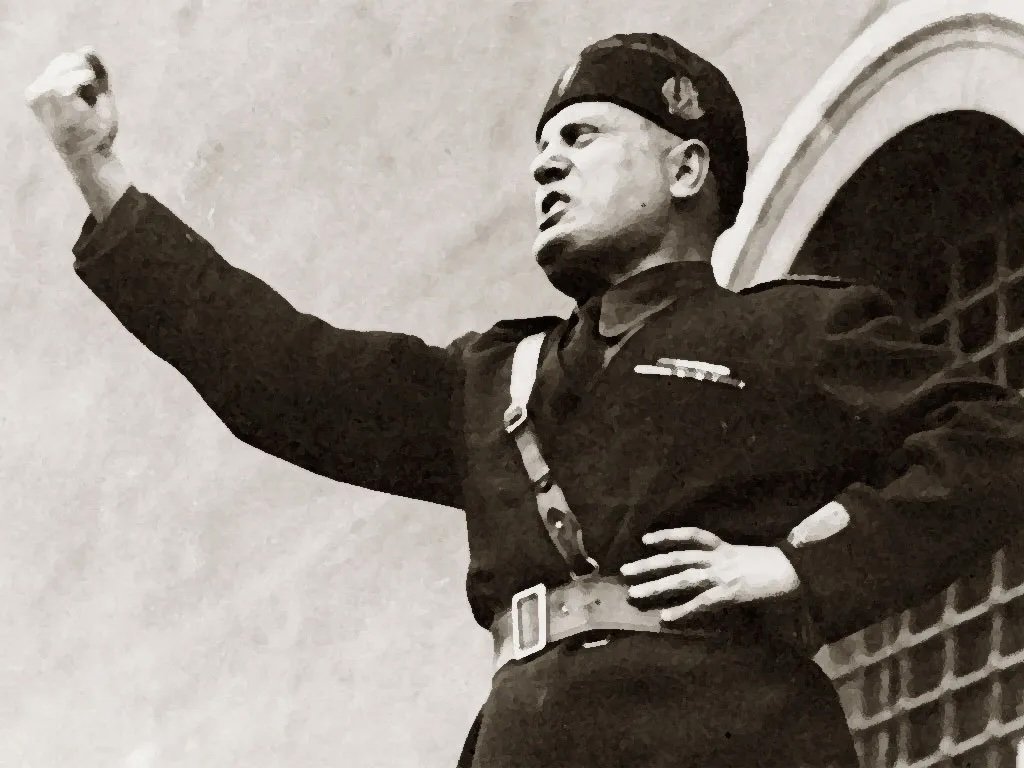
BENITO MUSSOLINI, MY DIARY
The year of Hitler’s My Struggle was also that of Benito Mussolini’s My Diary, drafted when he was a soldier and then Corporal-Major Mussolini of the Bersaglieri. It covers the period from 1915, when he first saw action, until he was wounded in February 1917—it is the origin story for his ongoing heroism. The 1922 “March on Rome” was a coup d’état that put Mussolini in power, immediately after which he began assassinating and imprisoning his political rivals. He then started the “pacification” of Libya, the bombing of Corfu, the annexation (as protectorate) of Albania, incursions into Yugoslavia, and the continued execution of his enemies—he took responsibility for some of these in a speech on January 3, 1925. That speech historians mark as the inauguration of his dictatorship. He would rule Italy until 1943 when, as the Allies invaded Sicily and bombed Rome, he was sacked and arrested by King Victor Emmanuel III. Mussolini was captured while trying to escape to Switzerland in April 1945, and his body was then hung, upside down, from the roof of an Esso gas station in Milan, where it was stoned by the crowd.
His war diary in 1925, though, was received as “a thrilling war diary” (Bookman) while he was “on the Alpine front, in a lost world of artillery” in “arctic cold, wet trenches, snow-slips, blood and death” (Literary Review).It was called “a stirring bit of writing,” describing “each day’s hardships and each day’s enthusiasms. One sees how the Italians have held out against oppression without and ignorance within” (Boston Transcript). Others thought it was so-so: “His diary is no better, and no worse than many other war diaries, but it is interesting both from its authorship and because some of the scenes of the Italian front he describes are admirable pictures of war,” said the Independent. Some took note of the man behind the words. “The book is interesting and important because of its realism. It gives a picture of life at the front as it really was as viewed by a brave man of penetrating mind,” said Saturday Review of Literature.H.A. Wager complained, in New York Herald Tribune, about the quality of the translation and the introduction (“a marvel of bad English”) but concluded: “Of Mussolini himself one gains from these pages a most attractive picture.” Only Alice Rohe seemed to see something slightly darker: “the story of the man Mussolini in these pages is the unconscious psychoanalysis of Europe’s most sensational premier in the making.” Besides Rohe, though, there was precious little fear or loathing in the response.
It was in 1925 that Mussolini first used the word “totalitarian” in a speech, meaning it as an honorific, praising “our ferocious totalitarian will.” Also in 1925, he declared himself “Head of Government,” unanswerable to the Italian parliament, and took the title “Il Duce.” He attacked any opposition he found, and later in 1925 he engineered the shutdown of L’Unità, the newspaper founded by Antonio Gramsci, at that time head of the Italian Communist Party. The following year, Mussolini would imprison Gramsci; the Prison Notebooks Gramsci wrote over the following decade would become essential texts in the history of leftist thought, introducing such influential concepts as cultural hegemony, organic intellectuals, and the philosophy of praxis.
Mussolini’s propogandist and lover Margherita Sarfatti wrote The Life of Benito Mussolini, which was published in English in 1925, and then in Italian in 1926.
(Click for full text)
(Click for full text)

